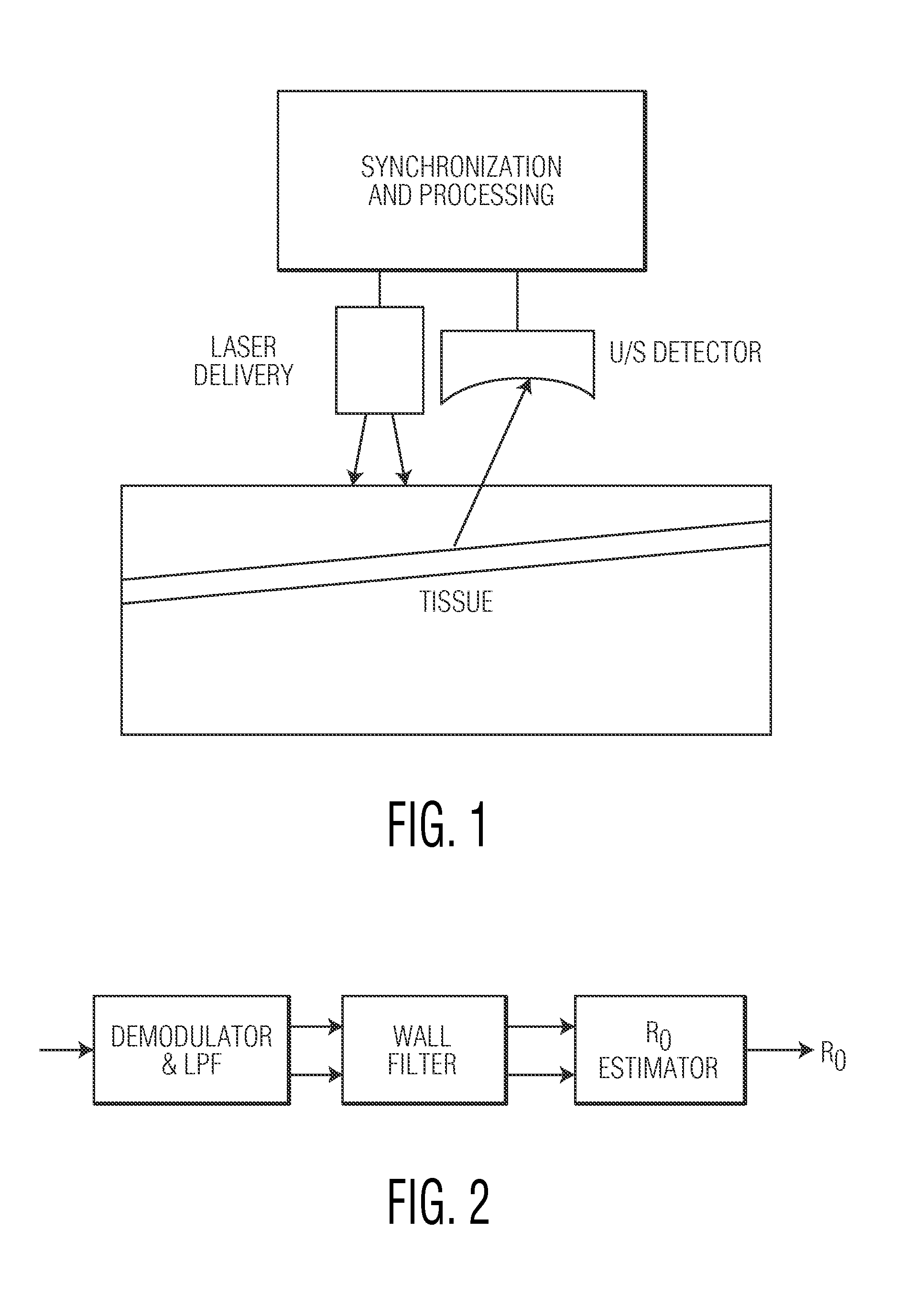Systems and methods for detecting flow and enhancing snr performance in photoacoustic imaging applications
a technology of photoacoustic imaging and flow detection, applied in the field of photoacoustic and thermoacoustic imaging, can solve the problems of inherently low signal-to-noise ratio (snr) level, complicated ultrasound approaches to in vivo imaging of blood flow, and difficult to achieve in vivo imaging. achieve the effect of enhancing snr performan
- Summary
- Abstract
- Description
- Claims
- Application Information
AI Technical Summary
Benefits of technology
Problems solved by technology
Method used
Image
Examples
Embodiment Construction
)
[0024]As noted herein above, the present disclosure provides systems and methods that advantageously combine photoacoustic and thermoacoustic imaging with power Doppler (PD) technology, e.g., to detect reduced flow rates with enhanced signal-to-noise (SNR) performance.
[0025]Of note, coded excitation has been employed to increase SNR of transmitted signals, e.g., in the telecommunications field. In particular, binary sequences may be used to encode signals, which are transmitted through a medium subject to noise or interference. The signals are received and decoded to recover medium information. Systems and methods which combine the use of coded excitation with the benefits of the well known Doppler effect (particularly in photoacoustic imaging applications) could prove highly beneficial for weak signal processing. In this regard, reference is made to a commonly assigned, co-pending provisional patent application entitled Coded Excitation For Photo-Acoustic and Thermo-Acoustic Imagi...
PUM
 Login to View More
Login to View More Abstract
Description
Claims
Application Information
 Login to View More
Login to View More - R&D
- Intellectual Property
- Life Sciences
- Materials
- Tech Scout
- Unparalleled Data Quality
- Higher Quality Content
- 60% Fewer Hallucinations
Browse by: Latest US Patents, China's latest patents, Technical Efficacy Thesaurus, Application Domain, Technology Topic, Popular Technical Reports.
© 2025 PatSnap. All rights reserved.Legal|Privacy policy|Modern Slavery Act Transparency Statement|Sitemap|About US| Contact US: help@patsnap.com


